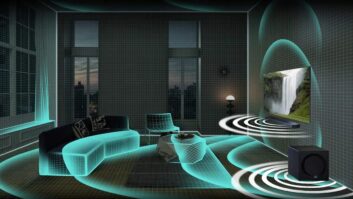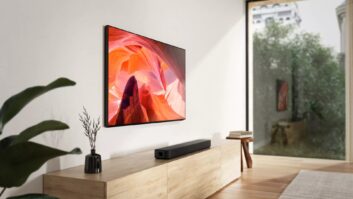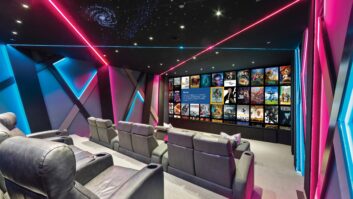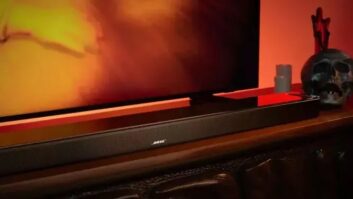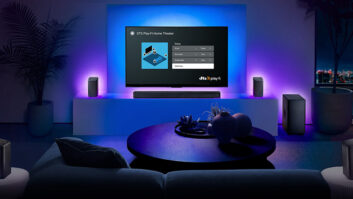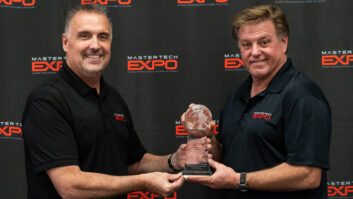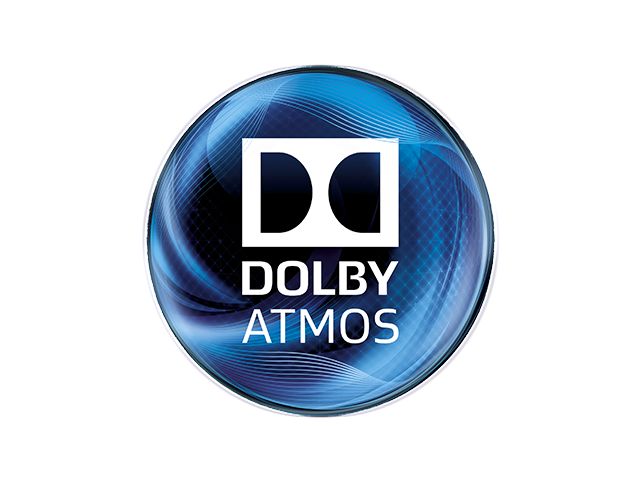
San Francisco — Dolby Labs revealed more details about the home-theater version of its Dolby Atmos surround technology, pointing out that Atmos will support as many as 24 speakers on the floor and 10 overhead speakers.
“One of our hardware partners is planning to release an A/V receiver with 32 channels,” said Brett Crockett, Dolby’s sound research director, in a Friday post on the company’s website.
Saying the company is responding to demand for more information, Crockett also revealed that traditional stereo, 5.1-channel and 7.1-channel content played back through an Atmos-enabled home theater will automatically be adapted “to use the full capabilities of your new system, including your overhead speakers, ensuring that you hear realistic and immersive sound.”
Consumers who add speakers with angled, upward-firing height drivers will get the best overhead sound effects with flat, not vaulted, ceilings made of acoustically reflective material, such as drywall, plaster, concrete or wood, Crockett said. Although the technology was designed for rooms with ceiling heights of 8 to 9 feet, Crockett said testing shows users would “still hear incredible Dolby Atmos sound in rooms with ceilings as high as 14 feet, though the effect may become more diffuse in rooms with higher ceilings.”
Recessed lighting fixtures, chandeliers, crown molding, and heating or AC vents in the ceiling “do not noticeably interfere with the Dolby Atmos experience,” he added.
Upward-firing speakers, which fire sound upward to reflect off the ceiling, can be built into traditional front-firing in-room speakers or added to an existing speaker system, the company previously disclosed. Alternately, the upward-firing speakers can be built into standalone modules that consumers would add “on top of your current speakers or on another nearby surface,” said Crockett.
For the best Atmos experience, Dolby recommends four in-ceiling overhead speakers for most homes, “but you can get great sound with just two,” he said.
Crockett also pointed out that Atmos is adaptable to a wide variety of speaker configurations other than the predefined configurations that Dolby licensees have talked up.
“Because Dolby Atmos is new to home theater, we defined a few ‘reference’ speaker configurations to ensure that early customers could have a great experience while having the option to keep most of the equipment they already have,” Crockett said. They include a 5.1.2 configuration, which adds two ceiling or Atmos-enabled in-room speakers to a traditional 5.1 system, and a 7.1.4 configuration, which takes a traditional 7.1 system and adds four ceiling or Atmos-enabled speakers.
However, Crockett noted, “because the Dolby Atmos object-based audio system is so adaptable, you can use many other speaker configurations. No matter what system you build, the Dolby Atmos format and system will adapt itself to output the best audio experience possible.”
The company also explained how Dolby Atmos soundtracks will be made available on Blu-ray discs playable on existing Blu-ray players. “We wanted to ensure that entertainment fans could get Dolby Atmos movies in the same ways they get movies now, on Blu-ray Disc or through streaming video services,” Crockett said. “We invented new scalable algorithms and extensions to Dolby TrueHD, our Blu-ray format, and Dolby Digital Plus, which is used by leading streaming video providers. Both formats now support Dolby Atmos sound, meaning that you’ll be able to play Dolby Atmos movies from your Blu-ray player or through your favorite streaming service.”
Any Blu-ray player that conforms to the Blu-ray specification can play a Dolby Atmos movie without a firmware update, he said, as long as the player’s HDMI audio output is set to audio bitstream output mode.
There’s no need to buy new HDMI cables, he added.
Last week, multiple audio suppliers announced plans for Dolby Atmos-decoding A/V receivers and preamp processors, but Dolby initially disclosed limited information about how the technology would work in the home.




